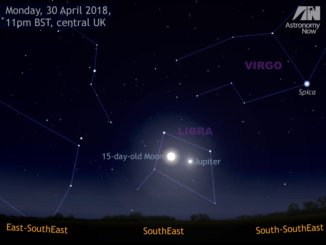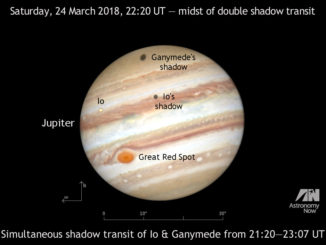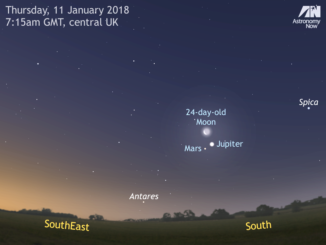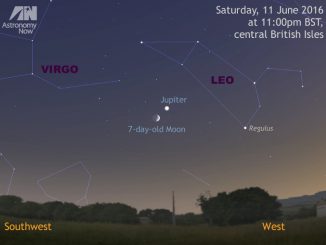
See the Moon get close to prime-time Jupiter on 30 April
Observers in Western Europe looking at the rising full Moon low in the southeast on the night of Monday, 30 April will also see conspicuous planet Jupiter close by, the pair fitting comfortably within the field of view of typical binoculars. Jupiter is close to opposition (9 May) and we show you how to identify its four main moons.









